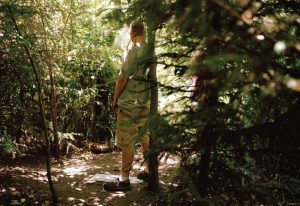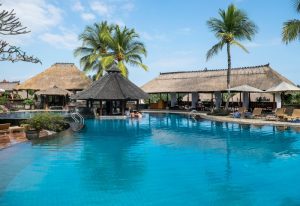Standing at the foot of Mount Everest is a life changing moment for any adventurer. The thin air, the prayer flags flapping in the wind and the massive Himalayas in front of you creates an atmosphere like nowhere else on earth. Planning your Everest Base Camp trek means deciding how you want to experience this once in a lifetime journey: will you walk both ways and soak in every step or trek up and then fly back in a helicopter for a breathtaking view from above? This decision will determine your pace, acclimatization and even the kind of memories you will bring back.
Many trekkers struggle to balance limited vacation days and the desire for a complete Himalayan experience. Others are concerned about physical demands or want to maximize their time by combining the trek with other adventures in Nepal. This guide will break down the Everest Base Camp trek with helicopter return and the classic trek, so you can choose the option that truly fits your priorities.
Understanding Each Option
What is the Classic Everest Base Camp Trek?
The classic trek takes around 12-14 days and starts with a short scenic flight from Kathmandu to Lukla, the gateway to the Khumbu region. From there you follow a well trodden path through Sherpa heartlands – villages like Namche Bazaar, Tengboche with its famous monastery, Dingboche, Lobuche and finally Gorak Shep. Along the way you will cross iconic suspension bridges draped with prayer flags, hear the distant rumble of glaciers and share tea houses with fellow trekkers from around the world. Built in acclimatization days allow your body to adapt gradually to the altitude, reducing the risk of illness while giving you time to explore side trails, visit cultural sites and truly absorb the mountain atmosphere.
What is the Everest Base Camp Trek with Helicopter Return?
This itinerary follows the classic trek up but changes dramatically on the way down. After reaching Everest Base Camp and perhaps climbing Kala Patthar for sunrise views, you board a helicopter from Lobuche for a quick and scenic flight back to Kathmandu or Lukla. The journey takes 8-9 days, saving nearly a week compared to the round trip walk. The helicopter return not only eliminates the long downhill walk but also gives you a once in a lifetime view of Everest, the Khumbu Icefall and surrounding peaks. This option is popular among those with limited time, seeking a less physically demanding adventure or wanting to capture spectacular aerial photography that few get to see up close.
Key Differences Between Helicopter Return and Classic Trek
Duration and Time Commitment
A helicopter return shortens the Everest Base Camp trek by 3-5 days, making it ideal for those with limited vacation time. This time saving option allows you to see the highlights without compromising the ascent but reduces your days in the Khumbu region. The classic trek, while longer offers a slower pace, more acclimatization days and extra time to interact with locals and explore side trails.
Cost Comparison
A helicopter return increases the Everest Base Camp trek cost due to flight operations, fuel and specialized pilots. While it’s a higher upfront investment you may save on extra days of accommodation and food. The classic trek is more affordable per day but accumulates cost over the extra days especially if you choose private guides or upgraded lodges.
Physical Demands and Difficulty
Flying back eliminates the long downhill hike which can be tough on knees and joints after days at altitude. This reduces overall fatigue and is easier for those with limited endurance. The classic trek requires more stamina especially during the return when energy levels may drop and weather conditions can change quickly.
Scenic Experience and Photography Opportunities
The classic route gives you close up views of villages, monasteries and ever changing Himalayan landscapes. Every day offers new perspectives and cultural encounters. The helicopter return gives you dramatic aerial shots of Everest, glaciers and the Khumbu Icefall, giving you a bird’s eye view few ever get to see. Many choose this option for its unique photography potential.
Weather and Seasonal Considerations
Helicopter flights require clear skies, low wind and good visibility, so spring and autumn are the most reliable seasons. Sudden storms or cloud cover can delay or cancel flights. The classic trek can continue in a wider range of weather conditions though heavy snow or rain may still affect progress and safety.
Pros and Cons – Classic Everest Base Camp Trek
Pros: cultural immersion, gradual altitude gain, deeper satisfaction from completing the full journey, more variety in landscapes and villages visited. You’ll have more time to interact with locals, observe daily life and witness subtle changes in scenery as you ascend and descend. Cons: longer trip duration means more days away from home or work, higher physical demands over two weeks and increased risk of fatigue or minor injuries from extended trekking.
Pros and Cons – Helicopter Return Everest Base Camp Trek
Pros: saves significant time, less physical strain on knees and joints, spectacular aerial views that offer a unique perspective of Everest and surrounding peaks. It allows you to conserve energy for enjoying your time at Base Camp and Kala Patthar. Cons: higher price due to flight costs, reduced time in local communities and less opportunity to experience the gradual change in landscapes on the descent.
Which One Is Better for You?
If You Have Limited Time
Helicopter return allows you to complete the Everest Base Camp trek and be back in under 10 days which is a huge advantage for those with tight vacation schedules. It also works well for travelers who want to combine their trek with other activities in Nepal, such as cultural tours in Kathmandu or wildlife safaris in Chitwan. By cutting out the return walk you can spend more time enjoying Base Camp and nearby viewpoints instead of retracing your steps on the same trails.
If You Want the Full Himalayan Experience
The classic trek offers unmatched cultural depth, more acclimatization time and a strong sense of accomplishment. You’ll witness the gradual shift in landscapes from lush valleys to stark alpine terrain and spend more time interacting with locals in tea houses and villages. From bustling market towns like Namche Bazaar to remote hamlets above 4,000 meters the classic route lets you absorb the rhythm of life in the Khumbu region at a slower, more immersive pace.
If You’re Concerned About Physical Fitness
Helicopter return eliminates the long descent days which can be physically taxing on joints, knees and energy reserves. This makes the trek more accessible to those with limited stamina or mobility issues without sacrificing the thrill of standing at Everest Base Camp. It’s also a good option for trekkers recovering from previous injuries or those who want to conserve energy for exploring other parts of Nepal after the trek.
Safety and Reliability Considerations
Always choose licensed helicopter services operated by experienced mountain pilots who know the region’s unique challenges. Weather delays are common at higher elevations so factor in at least one or two buffer days at the end of your trip. Even with a helicopter return altitude sickness can still be a concern if you rush the ascent so follow your guide’s acclimatization plan closely and monitor your health throughout the journey.
Conclusion
Both the helicopter return and the classic Everest Base Camp trek have their own magic. One gives you speed, comfort and jaw-dropping aerial views; the other delivers a slower, more immersive journey through the heart of the Khumbu. Your choice comes down to how you want to experience the Himalayas—swift and spectacular or gradual and deeply connected. Whatever path you choose, prepare well, travel safely and enjoy every moment. Have you trekked to EBC or are you planning to? Share your thoughts and experiences—we’d love to hear them.







